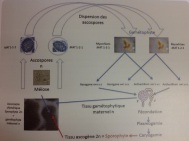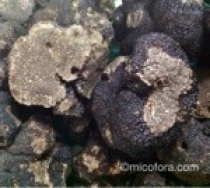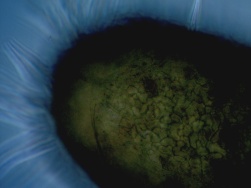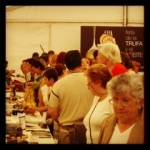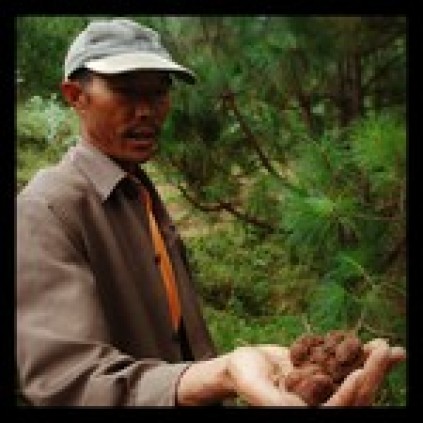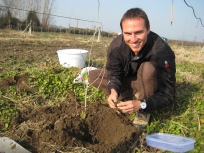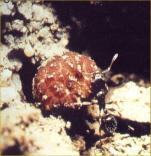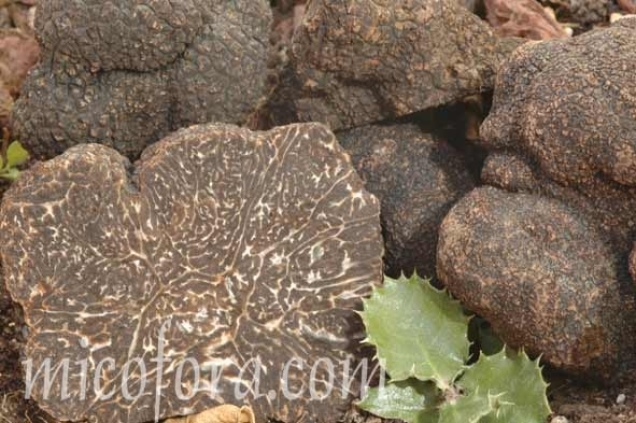
The other paper I wanted to talk is
In this study, authors aim to investigate T. melanosporum fruit bodies (FB) traits such as weight, maturity, shape and probability of Leiodes infestation comparing in different soil types and inside nests or spanish wells.
Truffle growers claim that nests increase truffle quality, although some growers warn on the issues related to the re-wetting problem of peat after drying, while others consider that truffle growing in nests present lower maturity (less melanised spores, lighter-coloured glebae) and ripeness (lower intensity of aroma). Other claim the truffle density is lower…
To see the magnitude of this study, during two seasons, 1865 T. melanosporum were harvested in 1212 digs, with nests accounting for 53% of the truffles harvested and 42% of the digs excavated.
The proportion of digs excavated in nests varied over the fruiting season, showing a positive trend from its beginning until early December, after which the relative abundance of digs in nests began to decline. Digs excavated in nests remained dominant from mid-November to mid-January, falling to their lowest values from mid-February, a period in which digs excavated in bulk soil became largely dominant.
Truffles harvested in nests were deeper than those harvested in the bulk soil. In 57% of digs excavated in bulk soil truffles were found at depths less than 10 cm, whereas in 67% of excavated nests were found at depths between 10 and 20 cm.
About 74% of the digs excavated presented only one truffle, with the remaining digs presenting from two to 17.
When there are more than one truffle in the dig, they are harvested in early season until early January.
Nests showed a positive effect in Soil 1, in which the number of truffles per dig almost doubled with respect to bulk soil; a positive effect in Soil 2 but only increasing the number of truffles by 30%; and no effect in Soil 3.
The shape index of truffles in single-fruitbody digs was higher in nests than in the bulk soil.
When they analyse truffle density, they saw that density of the truffles measured ranged between 0.8 and 1.9 g ml−1 with no differences were found between bulk soil and nests in any moment of the season.
The weight of truffles in the bulk soil in one of the seasons was influenced by soil properties, with more sandy soils tending to present higher weights.

Nests are a common practice in Spanish truffle orchards. The results demonstrate, for the first time, that nests effectively modify several agronomically important traits:
Fruit bodies grown in nests showed more spherical shapes and lower probability of infestation by Leiodes, thus resulting in improved truffle quality. Shape improvement could be easily explained by the lower and more uniform resistance to penetration of substrate. Lower levels of pest infestation could be related to the light, loose-structured substrate hindering the mobility of adults or impairing the bonding of eggs to soil aggregates. This result concurs with the incidental observation, during the field sampling, that in truffles growing partly in bulk soil and partly in a nest, Leiodes galleries were mostly located on the soil side.
The proportion of truffles infested by Leiodes was lower in nests than in bulk soil:

Nests clearly increased FB depth. This is very appreciated by Spanish growers, who feel that these FBs are less exposed to abiotic and biotic damages and are more unlikely to suffer from irregular or imperfect ripening.
Nests increased the number of FBs per dig in two of the soil blocks. the increased number of FBs in nests could be due to enhanced FB survival. Considering peat properties and environmental requirements for FB growth, high water availability and aeration in nests could be pivotal in this process.
The higher number of truffles per dig found in nests could also be related to enhanced fruiting initiation. Nest installation creates an abrupt discontinuity in the bulk soil/substrate interface.
Nests seem to particularly promote fruiting in early season. This could be due to the fungus finding conditions encouraging early fruiting initiation, early ripening or increasing the growth rate.
In conclusion, nests effectively increased truffle depth, improved shape and decreased Leiodes infestation, without decreasing maturity in single-fruit body digs.
I have to say that several growers complain about that the aroma of truffles found inside nests is not as good as in soil, probably new research that is currently being done will show that. Of course, adding the peat moss, we are changing the bacterial community that is one of the main producers of the truffle aroma volatile compounds…
Again, congrats to the research team for this work!
All the best.
Marcos Morcillo

























